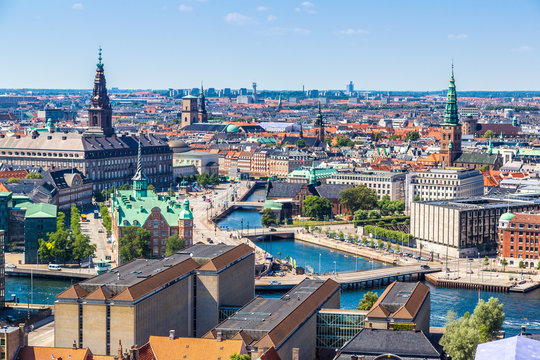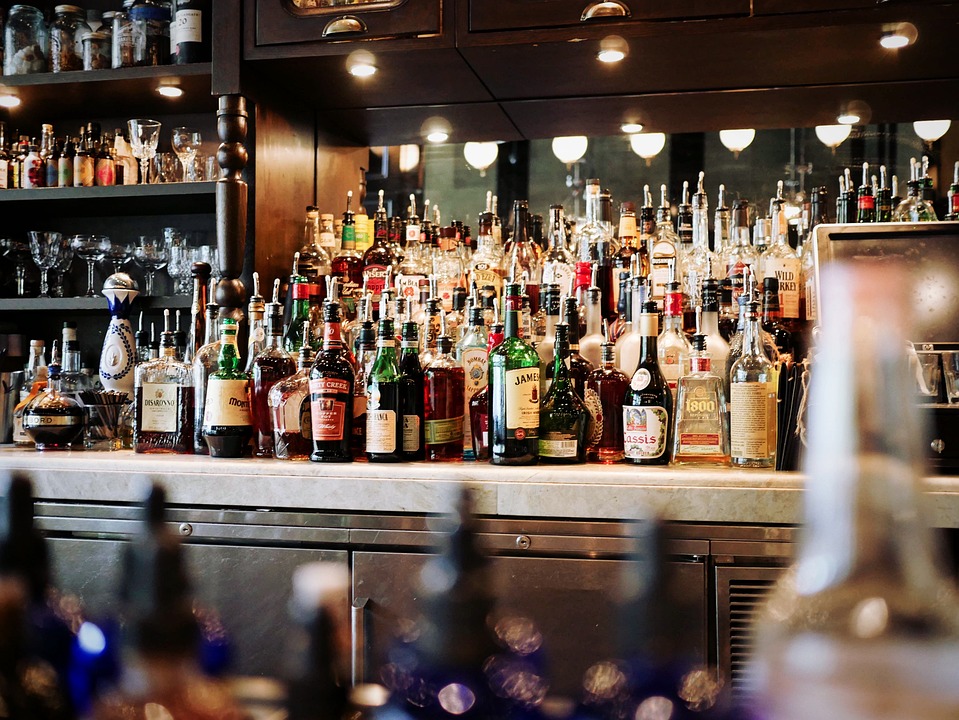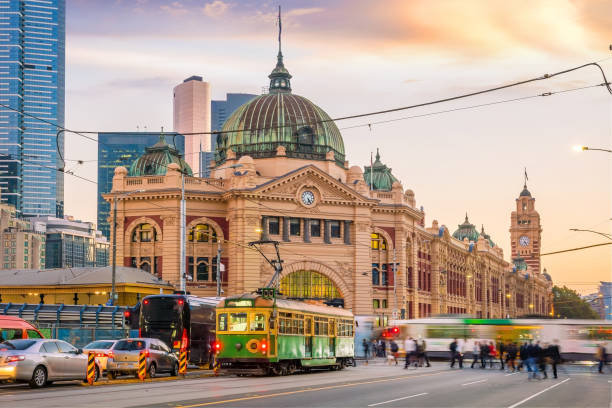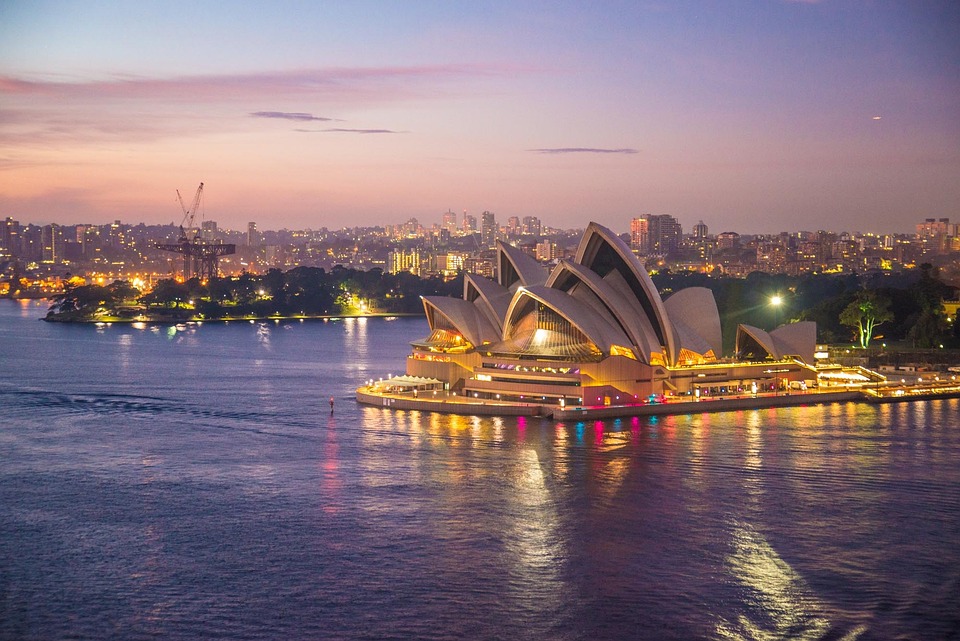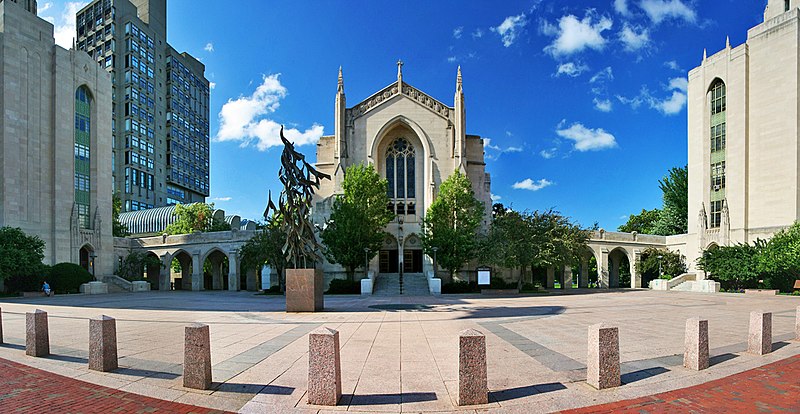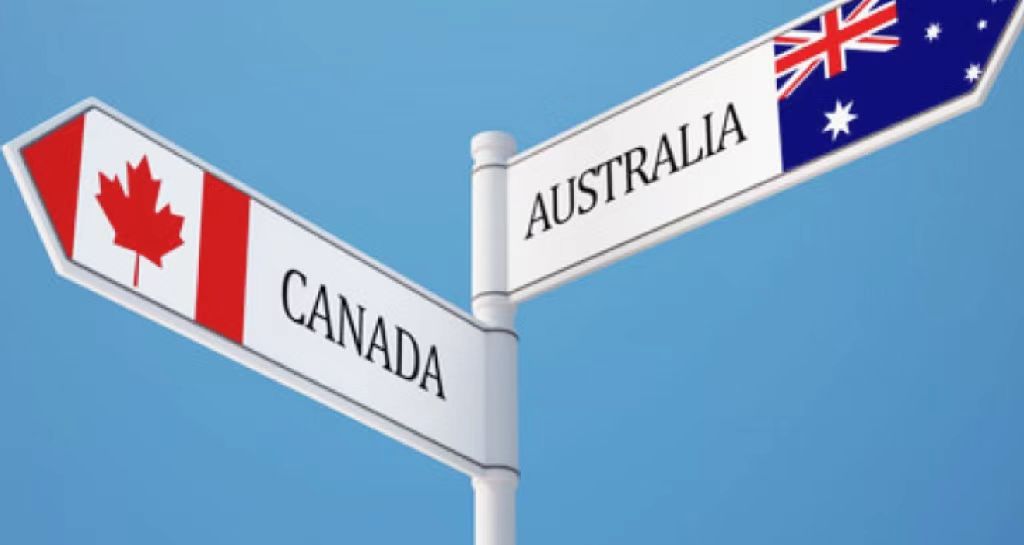Melbourne vs Brisbane is an intriguing issue attracts residents, students and visitors at home and abroad. When it comes to choosing a city to pay a visit or pursue further education in Australia, the debate often boils down to two vibrant contenders: Melbourne and Brisbane. Each city boasts its own unique charm, cultural flair, and lifestyle offerings, making the decision a nuanced one. Melbourne, known for its artistic heritage and bustling laneways, contrasts with Brisbane’s laid-back, sunny atmosphere and outdoor lifestyle.
In this blog, we’ll explore the key differences between these two urban centers, diving into aspects like cost of living, culture, education and the overall vibe to help you determine which city aligns best with your aspirations and lifestyle.
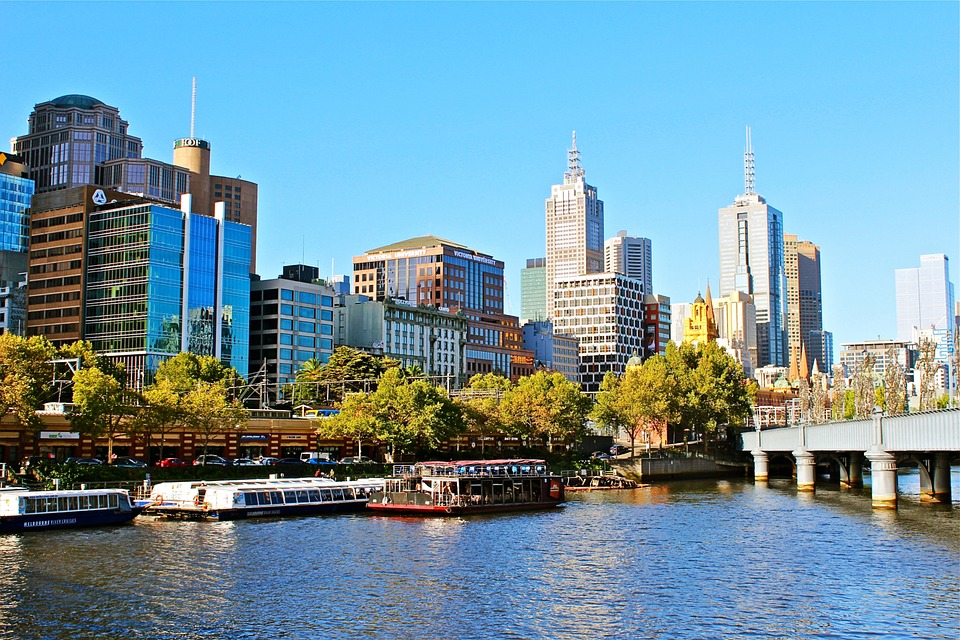
Melbourne is the capital and most populous city of the Australian state of Victoria, and the second-most populous city in Australia, after Sydney. Its name generally refers to a 9,993 km2 metropolitan area also known as Greater Melbourne comprising an urban agglomeration of 31 local municipalities although the name is also used specifically for the local municipality of City of Melbourne based around its central business area. The metropolis occupies much of the northern and eastern coastlines of Port Phillip Bay and spreads into the Mornington Peninsula, part of West Gippsland, as well as the hinterlands towards the Yarra Valley, the Dandenong Ranges, and the Macedon Ranges.
Today Melbourne is culturally diverse and, among world cities, has the 4th largest foreign born population. It is a leading financial centre in the Asia-Pacific region, ranking 28th globally in the 2024 Global Financial Centres Index. The city’s eclectic architecture blends Victorian era structures, such as the World Heritage-listed Royal Exhibition Building, with one of the world’s tallest skylines. Additional landmarks include the Melbourne Cricket Ground and the National Gallery of Victoria. Noted for its cultural heritage, the city gave rise to Australian rules football, Australian impressionism and Australian cinema, and is noted for its street art, live music and theatre scenes. It hosts major annual sporting events, such as the Australian Grand Prix and the Australian Open, and also hosted the 1956 Summer Olympics. Melbourne ranked as the world’s most livable city for much of the 2010s.

Brisbane is the capital and largest city of the state of Queensland and the third-most populous city in Australia and Oceania, with a population over 2.7 million. The city is best known for its subtropical climate, unique natural landscape and iconic Queenslander architecture.
Brisbane lies at the centre of South East Queensland, an urban agglomeration with a population of approximately 4 million which includes several other regional centres and cities. The central business district is situated within a peninsula of the Brisbane River about 15 km from its mouth at Moreton Bay. Brisbane is located in the hilly floodplain of the Brisbane River Valley between Moreton Island and the Taylor and D’Aguilar mountain ranges. It sprawls across several local government areas, most centrally the City of Brisbane. The demonym of Brisbane is Brisbanite.
Brisbane is a global centre for research and innovation and is a transportation hub, being served by large rail, bus and ferry networks, as well as Brisbane Airport and the Port of Brisbane, Australia’s third-busiest airport and seaport.
A diverse city with over 36% of its metropolitan population being foreign-born, Brisbane is frequently ranked highly in lists of the most liveable cities. Brisbane has hosted major events including the 1982 Commonwealth Games, World Expo 88, the 2001 Goodwill Games, the 2014 G20 summit, and will host the 2032 Summer Olympics and Paralympics.
Brisbane is one of Australia’s most popular tourist destinations and is Australia’s most biodiverse and greenest city. South Bank and its extensive parklands is the most visited tourist landmark in Australia, with over 14 million visitors every year. Other major landmarks and precincts of the city include the Queensland Cultural Centre (including the Queensland Art Gallery, the Gallery of Modern Art, the Queensland Museum, the State Library of Queensland and the Queensland Performing Arts Centre), Brisbane City Hall, the Story Bridge, Howard Smith Wharves, Queen’s Wharf, St John’s cathedral, and Mount Coot-tha Lookout. Much of Brisbane’s inner-city neighbourhoods are also characterised by its historic Queenslander architecture. Brisbane is also known for its extensive parks and outdoor attractions including the City Botanic Gardens, Victoria Park, Roma Street Parkland, New Farm Park, the Mount Coot-tha Botanic Gardens, the Brisbane Riverwalk, Moreton Bay, Moreton Island and D’Aguilar National Park.
Melbourne vs Brisbane: Cost of Living

Average Net Salary
Understanding average net salaries is essential for assessing the economic landscape of a city, as it directly influences the quality of life and financial stability of its residents. This comparison focuses on the average net salary in Brisbane and Melbourne, two of Australia’s largest and most dynamic cities, each with its unique job market and cost of living. By examining the average net income, we can gain insights into the earning potential in these urban centers, helping individuals evaluate career opportunities and make informed decisions about relocation.
- Melbourne: $6359.79/per month
- Brisbane: $5928.79/mth
Housing
Housing costs are a critical factor for residents and prospective movers in any city. This comparison examines the monthly housing expenses in the city centres and surrounding areas of Brisbane and Melbourne, two major urban centers in Australia. By analyzing these costs, we can better understand the economic landscape and the affordability of living in these vibrant cities.
| City | Location | 1-Bedroom Apartment (Rent) | 3-Bedroom Apartment (Rent) | Price Per ㎡ (Buy) |
|---|---|---|---|---|
| Melbourne | In City Centre | $2,244.91 | $4,121.05 | $10,691.61 |
| Outside City Centre | $1,793.36 | $2,666.65 | $8,570.65 | |
| Brisbane | In City Centre | $2,456.94 | $3,937.66 | $12,072.54 |
| Outside City Centre | $2,075.15 | $2,633.03 | $8,354.92 |
UniLodge Melbourne Central, Melbourne
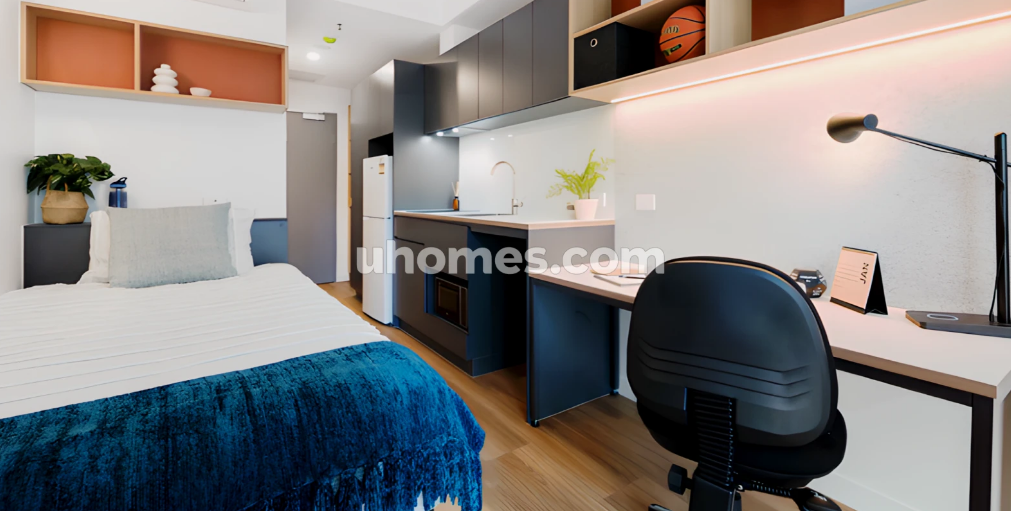
UniLodge Melbourne Central provides a tranquil haven for students looking for the best student housing with the renowned RMIT University City Campus only a 2-minute walk away and easy access to other prestigious institutions like Kent Institute Australia. One of Melbourne’s greatest and most reasonably priced student housing options is UniLodge Melbourne Central. Modern security elements, a lively community atmosphere with shared spaces, and a variety of well-furnished accommodation options are all provided by UniLodge Melbourne Central.
Scape South Bank, Brisbane
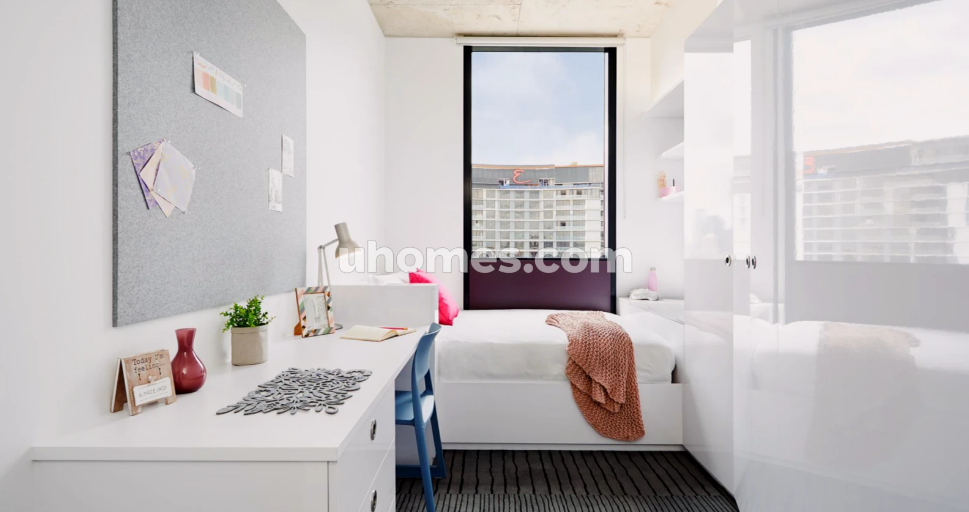
Scape South Bank is located in Brisbane’s South Bank and has many convenient amenities and restaurants. Scape South Bank Brisbane has a range of accommodation types, including studios of various sizes, spacious double rooms, suites, and 5-room suites. To ensure your safety, Scape South Bank has 24-hour security and safety services, skilled help staff, and surveillance cameras.
Utilities
Utilities play a vital role in the overall cost of living, significantly impacting residents’ monthly budgets. This table provides a comparison of utility expenses in Brisbane and Melbourne, two prominent cities in Australia. By examining the average monthly costs for essential services such as electricity, water, heating, and internet, we can gain insight into the financial demands faced by households in these urban environments.
| City | Electricity | Heating | Water | Garbage | Internet | Mobile Phone Data | Total Estimated Cost |
|---|---|---|---|---|---|---|---|
| Brisbane | $150 – $250 | $0 – $50 | $50 – $80 | $30 – $50 | $70 – $100 | $30 – $60 | $330 – $590 |
| Melbourne | $180 – $300 | $50 – $100 | $60 – $90 | $30 – $50 | $70 – $120 | $30 – $60 | $420 – $720 |
Transportation
Transportation is a key component of daily life, influencing not only convenience but also overall living expenses. This table compares the monthly transportation costs in Brisbane and Melbourne, two of Australia’s largest cities, known for their distinct public transit systems and infrastructure. By analyzing costs associated with public transportation fares, fuel prices, and vehicle maintenance, we can better understand the financial implications of commuting in each city.
| City | Subway/Bus (Monthly Pass) | Taxi (Average Fare) | Private Car (Fuel + Insurance + Maintenance) | Total Estimated Cost |
|---|---|---|---|---|
| Brisbane | $150 – $200 | $30 – $50 (per trip) | $300 – $500 | $480 – $750 |
| Melbourne | $160 – $230 | $35 – $55 (per trip) | $350 – $550 | $545 – $835 |
Groceries
Grocery expenses are a fundamental aspect of household budgeting, impacting the overall cost of living in any city. This table presents a comparison of monthly grocery costs in Brisbane and Melbourne, two vibrant Australian cities known for their diverse food markets and shopping options. By examining the average prices for essential food items, we can gain insight into the differences in grocery costs between these urban centers. This information is valuable for residents and newcomers alike, as it aids in financial planning and helps individuals make informed decisions about their food budgets.
| Item | Brisbane | Melbourne |
|---|---|---|
| Eggs (dozen) | $4 – $5 | $4 – $6 |
| Milk (1L) | $1.50 – $2 | $1.50 – $2.50 |
| Bread (loaf) | $2 – $4 | $2 – $4 |
| Cheese (500g) | $6 – $10 | $8 – $12 |
| Tomatoes (1kg) | $3 – $5 | $4 – $6 |
| Lettuce (head) | $1.50 – $2.50 | $2 – $3 |
| Apples (1kg) | $3 – $5 | $4 – $6 |
| Oranges (1kg) | $3 – $5 | $4 – $6 |
| Total (Approx.) | $24 – $43 | $30 – $51 |
Melbourne vs Brisbane: Climate
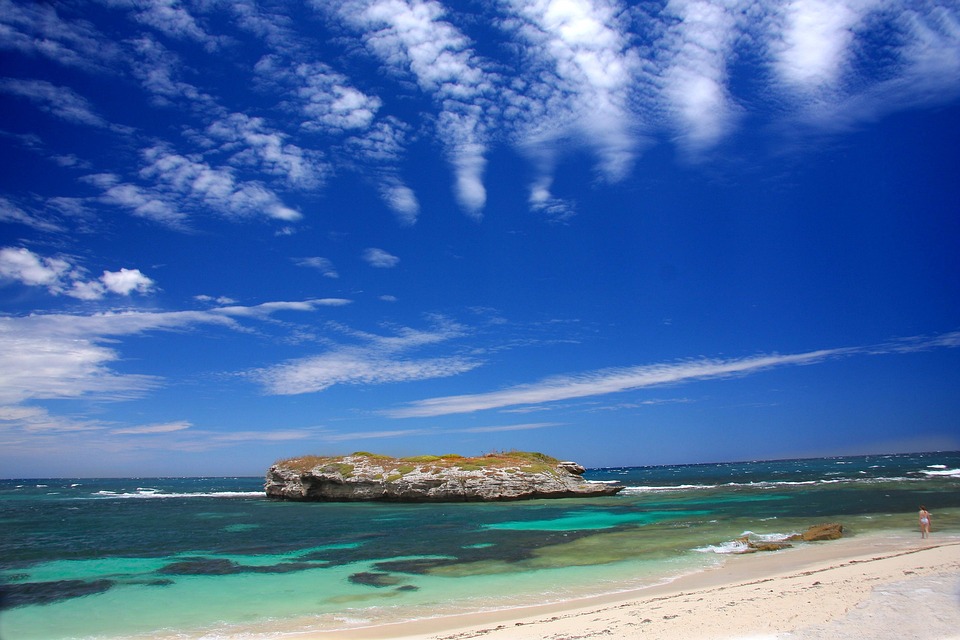
Melbourne has a temperate oceanic climate with warm summers and cool winters. Melbourne is well known for its changeable weather conditions, mainly due to it being located on the boundary of hot inland areas and the cool southern ocean. This temperature differential is most pronounced in the spring and summer months and can cause strong cold fronts to form.
Brisbane has a humid subtropical climate with hot, wet summers and moderately drier, mild winters. Brisbane experiences an annual mean minimum of 16.6 °C and mean maximum of 26.6 °C making it Australia’s second-hottest capital city after Darwin. Due to its proximity to the Coral Sea and a warm ocean current, Brisbane’s overall temperature variability is somewhat less than most Australian capitals. Summers are long, hot, and wet, but temperatures only occasionally reach 35 °C or more.
Melbourne vs Brisbane: Urban Structure
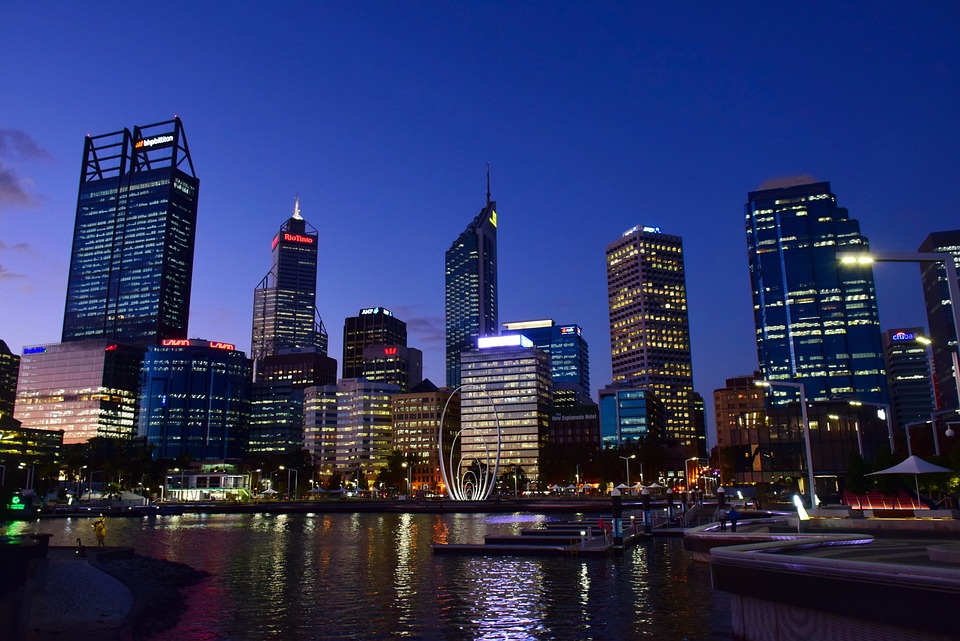
Melbourne’s urban area is approximately the largest in Australia and the 33rd largest in the world. The Hoddle Grid, a grid of streets measuring approximately forms the nucleus of Melbourne’s central business district. The grid’s southern edge fronts onto the Yarra River. More recent office, commercial and public developments in the adjoining districts of Southbank and Docklands have made these areas into extensions of the CBD in all but name. A byproduct of the CBD’s layout is its network of lanes and arcades, such as Block Arcade and Royal Arcade.
The Brisbane central business district lies in a curve of the Brisbane river. The CBD covers 2.2 km2 and is walkable. Most central streets are named after members of the House of Hanover. Queen Street is Brisbane’s traditional main street and contains its largest pedestrian mall, the Queen Street Mall. Streets named after female members run parallel to Queen Street and perpendicular to streets named after male members.
Melbourne vs Brisbane: Culture
Often referred to as Australia’s cultural capital, Melbourne is known for its music, theatre and arts scenes, as well as its diverse range of cultural events and festivals, including the Melbourne International Arts Festival, Melbourne Fringe Festival and Moomba, Australia’s largest free community festival. Melbourne is home to many theatres, eight of which are concentrated in the East End Theatre District, including the Victorian era Athenaeum. Melbourne has been called “the live music capital of the world”, one study found it has more music venues per capita than any other world city sampled, with 17.5 million patron visits to 553 venues in 2024. The oldest film in Australia’s National Film and Sound Archive is of the 1896 Melbourne Cup.
Brisbane is home to several art galleries, the largest of which are the Queensland Art Gallery and the Queensland Gallery of Modern Art (GOMA), which is the largest modern art gallery in Australia. GOMA holds the Asia Pacific Triennial (APT) which focuses on contemporary art from the Asia and Pacific in a variety of media from painting to video work. Dramatic and musical theatre performances are held at the multiple large theatres located at Queensland Performing Arts Centre (QPAC). Brisbane’s live music scene is diverse and its history is often intertwined with social unrest and authoritarian politics, as retold by journalist Andrew Stafford in Pig City: From The Saints to Savage Garden.
Melbourne vs Brisbane: Sport
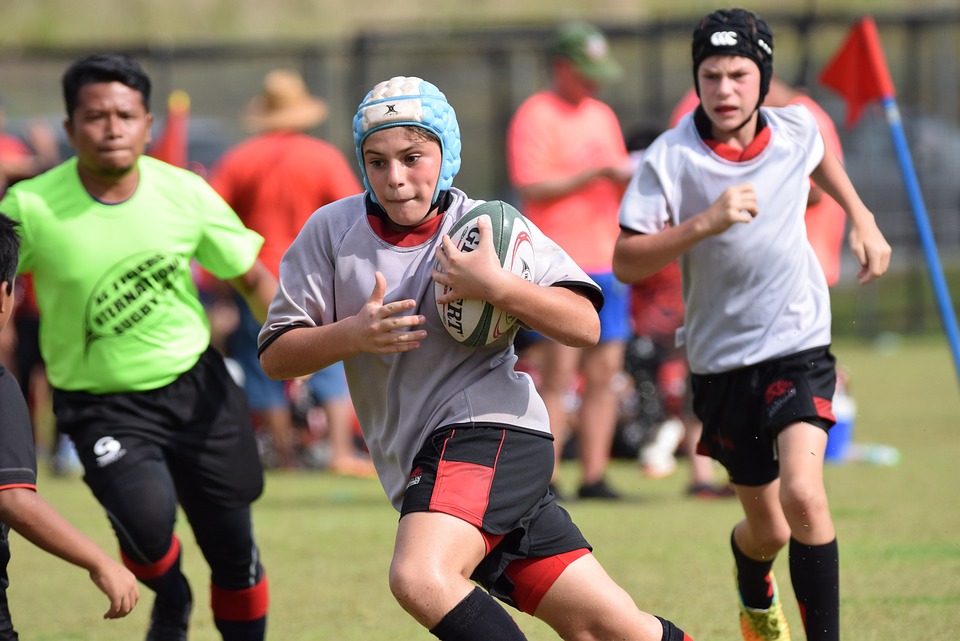
Melbourne has long been regarded as Australia’s sporting capital due to the role it has played in the development of Australian sport, the range and quality of its sporting events and venues, and its high rates of spectatorship and participation. The city is also home to 27 professional sports teams competing at the national level, the most of any Australian city. Melbourne’s sporting reputation was recognised in 2016 when, after being ranked as the world’s top sports city three times biennially, the Ultimate Sports City Awards in Switzerland named it ‘Sports City of the Decade’. The city has hosted a number of major international sporting events, most notably the 1956 Summer Olympics, the first Olympic Games held outside Europe and the United States. Cricket was one of the first sports to become organized in Melbourne with the Melbourne Cricket Club forming within three years of settlement.
Brisbane has hosted several major sporting events including the 1982 Commonwealth Games and the 2001 Goodwill Games. It will host the 2032 Summer Olympics and 2032 Summer Paralympics. Brisbane is represented by the rugby league teams the Brisbane Broncos and Dolphins, who play in the National Rugby League, and is also home to the Queensland Maroons, who play in the State of Origin series. Cricket is popular in the Brisbane and the city hosts the Brisbane Heat who play in the Big Bash League and the Queensland Bulls who play in the Sheffield Shield and the Ryobi One Day Cup.
Melbourne vs Brisbane: Economy
Melbourne has a highly diversified economy with particular strengths in finance, manufacturing, research, IT, education, logistics, transportation and tourism. Melbourne houses the headquarters of many of Australia’s largest corporations. Melbourne is also an important financial centre. In the 2024 Global Financial Centres Index, Melbourne was ranked as having the 28th most competitive financial centre in the world. It is the Australian base for a number of significant manufacturers including Boeing Australia.
Categorized as a global city, Brisbane is among Asia-Pacific cities with largest GDPs and is one of the major business hubs in Australia, with strengths in mining, banking, insurance, transportation, information technology, real estate and food. Some of the largest companies headquartered in Brisbane, all among Australia’s largest, include Suncorp Group. Brisbane throughout its history has been one of Australia’s most important seaport cities.
Melbourne vs Brisbane: Tourism
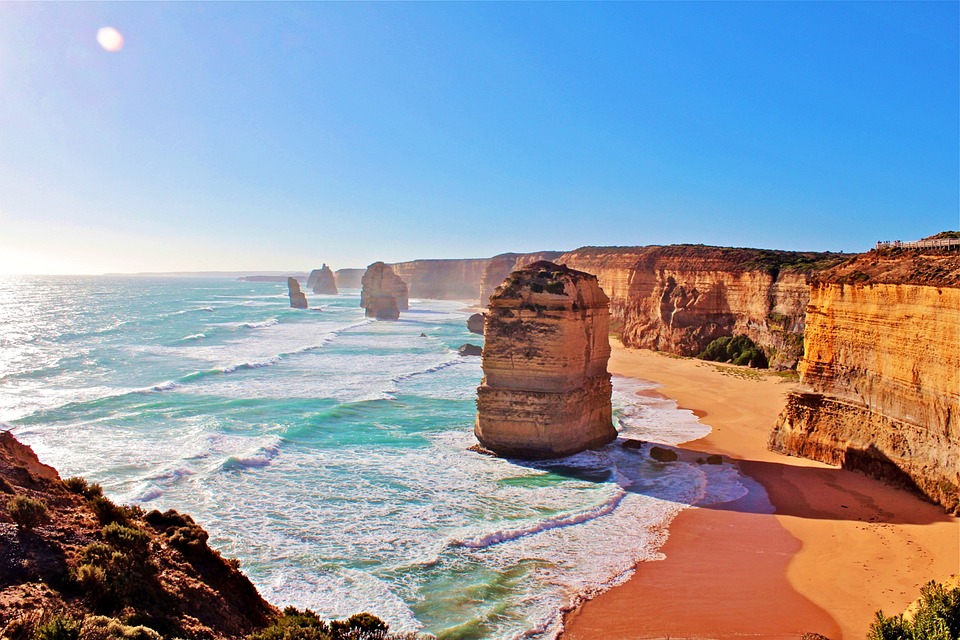
Melbourne is the second most visited city in Australia and the seventy-third most visited city in the world. The most visited attractions are Federation Square, Queen Victoria Market, Crown Casino, Southbank, Melbourne Zoo, Melbourne Aquarium, Docklands, National Gallery of Victoria, Melbourne Museum, Melbourne Observation Deck, Arts Centre Melbourne, and the Melbourne Cricket Ground. Melbourne has a renowned culinary scene that attracts international tourists. Lygon Street, which runs through the inner-northern suburbs of Melbourne, is a popular dining destination with an abundance of Italian and Greek restaurants that date back to earlier European immigration of the city. Melbourne is also home to many annual events and festivals.
Tourism plays a major role in Brisbane’s economy, being the third-most popular destination for international tourists after Sydney and Melbourne. Popular tourist and recreation areas near inner city Brisbane include the South Bank Parklands including the Wheel of Brisbane, the City Botanic Gardens, Roma Street Parkland, New Farm Park, the Howard Smith Wharves, Queens Wharf & Casino and the Teneriffe woolstores precinct. Away from the inner city, Brisbane has a number of tourist attractions and destinations such as the, University of Queensland in St Lucia and Sirromet Winery at Mount Cotton.
Melbourne vs Brisbane: Education
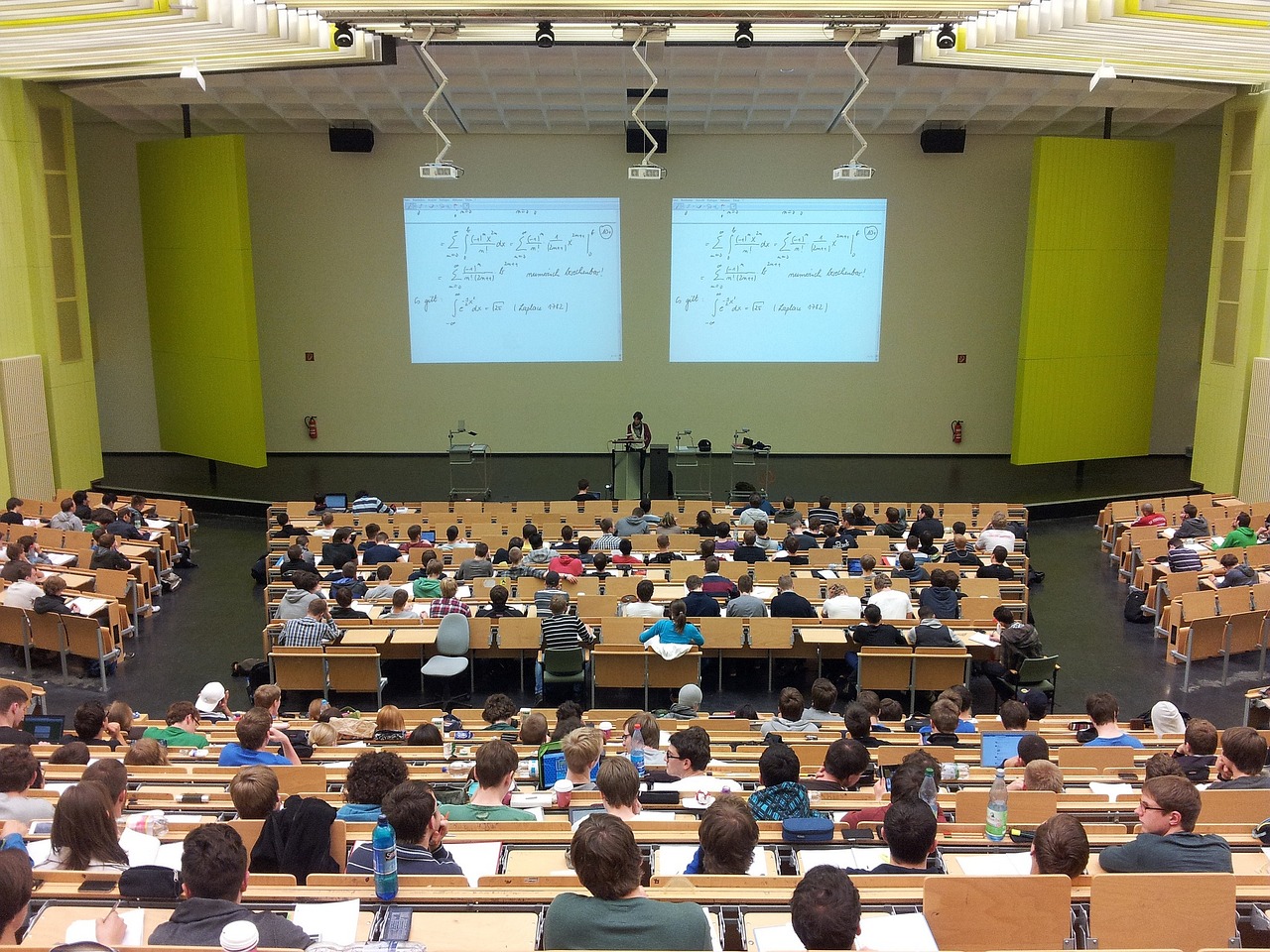
Of the top twenty high schools in Australia according to the My Choice Schools Ranking, five are in Melbourne. There has also been a rapid increase in the number of International students studying in the city, with Melbourne considered the 4th best city in the world for studying abroad in the 2024 Best Student Cities ranking by QS. Melbourne universities have campuses all over Australia and some internationally. As of 2024 RMIT University is ranked 18th in the world in both Art & Design, and Architecture.
Brisbane is a major destination for international students, who constitute a large proportion of enrolments in Brisbane’s universities and are important to the city’s economy and real estate market. There are biotechnology and research facilities at several universities in Brisbane, including the Institute for Molecular Bioscience and CSIRO at the University of Queensland.
Melbourne vs Brisbane: Transportation
Like many Australian cities, Melbourne has a high dependency on the automobile for transport particularly in the outer suburban areas where the largest number of cars are bought. The road network in Victoria is managed by Vicroads, as part of the Department of Transport, who oversee the planning and integration. Melbourne has an extensive network of freeways and arterial roadways. Melbourne has four airports. Melbourne Airport, at Tullamarine, is the city’s main international and domestic gateway and second busiest in Australia. Ship transport is an important component of Melbourne’s transport system.
Brisbane has an extensive transport network within the city, as well as connections to regional centres, interstate and to overseas destinations. Like all Australian cities, the most popular mode of transport is private car. Brisbane is served by a large network of urban and inter-urban motorways. Brisbane Airport is the city’s main airport, the third busiest in Australia after Sydney Airport and Melbourne Airport. The Port of Brisbane is located on the south side of the mouth of the Brisbane River on Moreton Bay and on the adjacent Fisherman’s Island, an artificial island created by land reclamation.
Melbourne vs Brisbane: Healthcare
Among Australian capital cities, Melbourne ties with Canberra in first place for the highest male life expectancy and ranks second behind Perth in female life expectancy. Major medical, neuroscience and biotechnology research institutions located in Melbourne include the St. Vincent’s Institute of Medical Research, Australian Stem Cell Centre and the Burnet Institute. The headquarters of Australian pharmaceutical company CSL Limited is located in the Melbourne Biomedical Precinct in Parkville, which contains over 40 biomedical and research institutions.
Brisbane is covered by Queensland Health’s Hospital and Health Services. Within the greater Brisbane area there are eight major public hospitals, four major private hospitals, and numerous smaller public and private facilities. Specialist and general medical practices are located in the CBD, and most suburbs and localities. Brisbane is also home to the headquarters of the Queensland Ambulance Service central executive, located at the Emergency Services Complex Kedron Park, along with the headquarters of the Queensland Fire and Emergency Services and the Queensland Emergency Operations Centre.
Conclusion
In the end, the choice between Melbourne and Brisbane ultimately depends on your personal preferences and lifestyle aspirations. Melbourne captivates with its cultural richness and urban sophistication, perfect for those who thrive in a vibrant, cosmopolitan environment. Meanwhile, Brisbane offers a warm, relaxed lifestyle with a focus on outdoor activities and community spirit, ideal for those who enjoy a sunny, laid-back atmosphere. Whether you’re drawn to the arts and nightlife of Melbourne or the scenic beauty and warmth of Brisbane, both cities have their unique advantages. Whichever you choose, both cities promise an enriching experience filled with opportunities for growth, connection, and adventure.
After you have chosen one city as your educational destination or journey end, accommodation is the first and foremost thing. uhomes.com provides you with affordable, reliable and comfortable student apartments in Australia.
